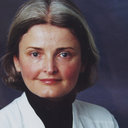Spinal fusion in Duchenne muscular dystrophy: a multidisciplinary approach.
Słowa kluczowe
Abstrakcyjny
We studied 27 Duchenne muscular dystrophy patients having spinal fusion for scoliosis. One patient died intraoperatively of cardiac arrest; all others have done well with no instances of malignant hyperthermia, postoperative ventilatory system dependence, pneumothorax, persisting infection, neurologic damage, nonunion, or pain. The anesthetic management included primarily intravenous general anesthetics with minimal myocardial depressant effects, avoiding succinylcholine and inhalation agents. Preoperative cardiac studies aided anesthetic management intra-operatively. There was an almost universal sinus tachycardia. Holter monitoring defined 4 of 16 with ventricular premature beats, 4 of 16 with atrial premature beats, and no ventricular tachycardia or atrial flutter or fibrillation. Echocardiogram demonstrated mitral prolapse in 2 of 22, frequent abnormal systolic performance with abnormal shortening fraction less than 28% in 7 of 16, and reduced rate-corrected velocity of fiber shortening in 9 of 15. Afterload was elevated in 7 of 15. The mean forced vital capacity (FVC) preoperatively was 45.3 +/- 15.9% with continuing diminution to 28.7 +/- 14.9% at 3.3 +/- 2.2 years after surgery. The main benefit of surgical stabilization is the relative ease and comfort of wheelchair seating compared with those nonoperated patients who develop progressive deformity. We have not seen lasting improvement or stabilization in FVC following surgery as decreasing function is related primarily to muscle weakness.


